Accessible garden design: 15 ideas for landscaping, paths, planting and more
Follow our tips on accessible garden design to create a space that can be used and enjoyed by everyone
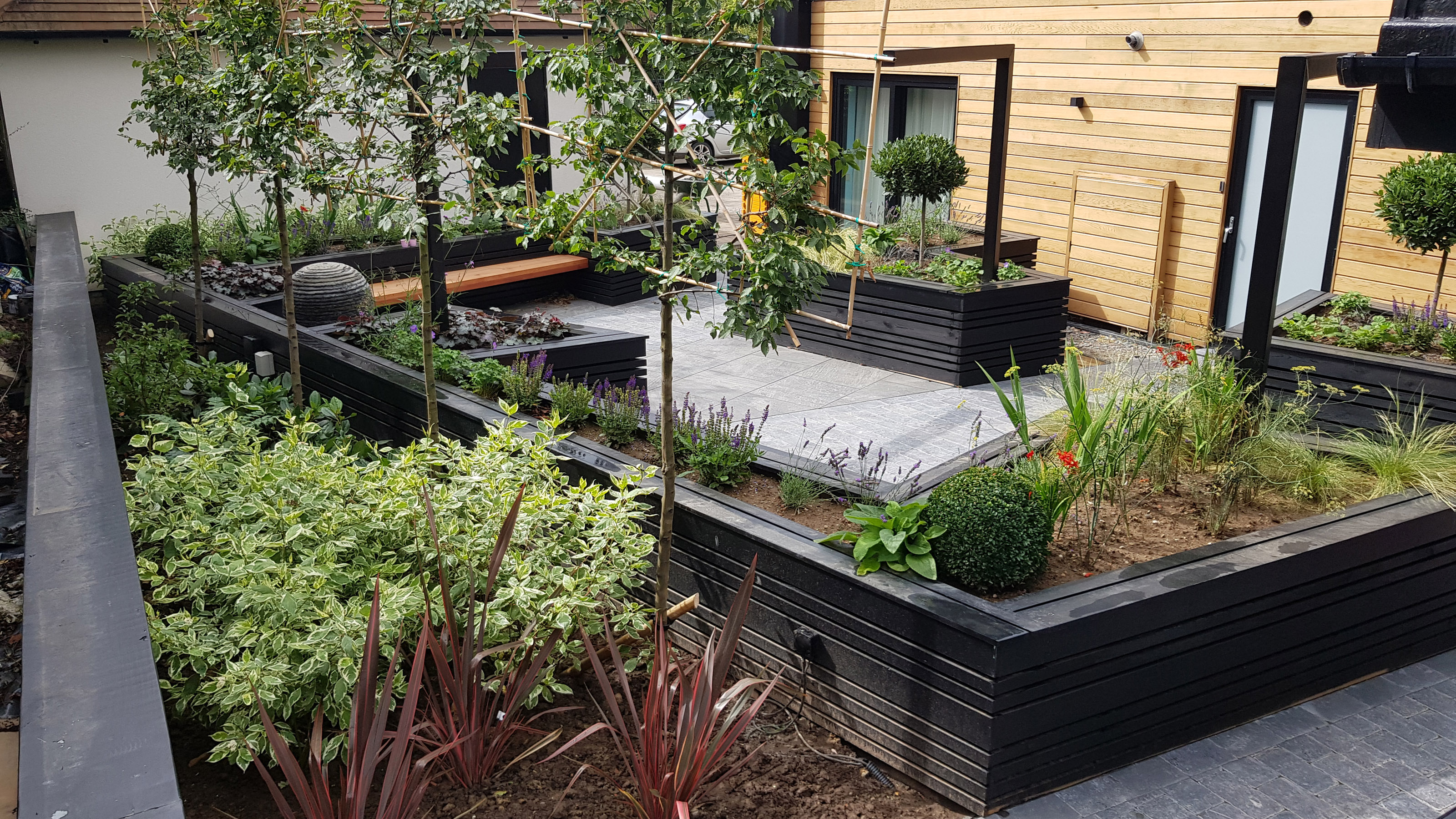

With our advice on accessible garden design, you can create a space that everyone can enjoy. Gardens are places where we grow and get creative with plants, relax, recharge and spend quality time with family and friends, but if your mobility is limited or you want to futureproof your backyard for when you're older, formulating plans and getting started can be daunting.
Merging beautiful garden design ideas with essential practicalities may initially seem impossible at first but, don’t worry, help is at hand. Many garden designers and manufacturers are keen to make a difference, ensuring gardening’s health and wellbeing benefits are readily available to all.
Creativity flourishes in a garden and having physical limitations often calls for more ingenious solutions, so grab a moment and read on for inspiring ideas and expert tips on accessible garden design that will help you to transform your outside space.
What is accessible garden design?
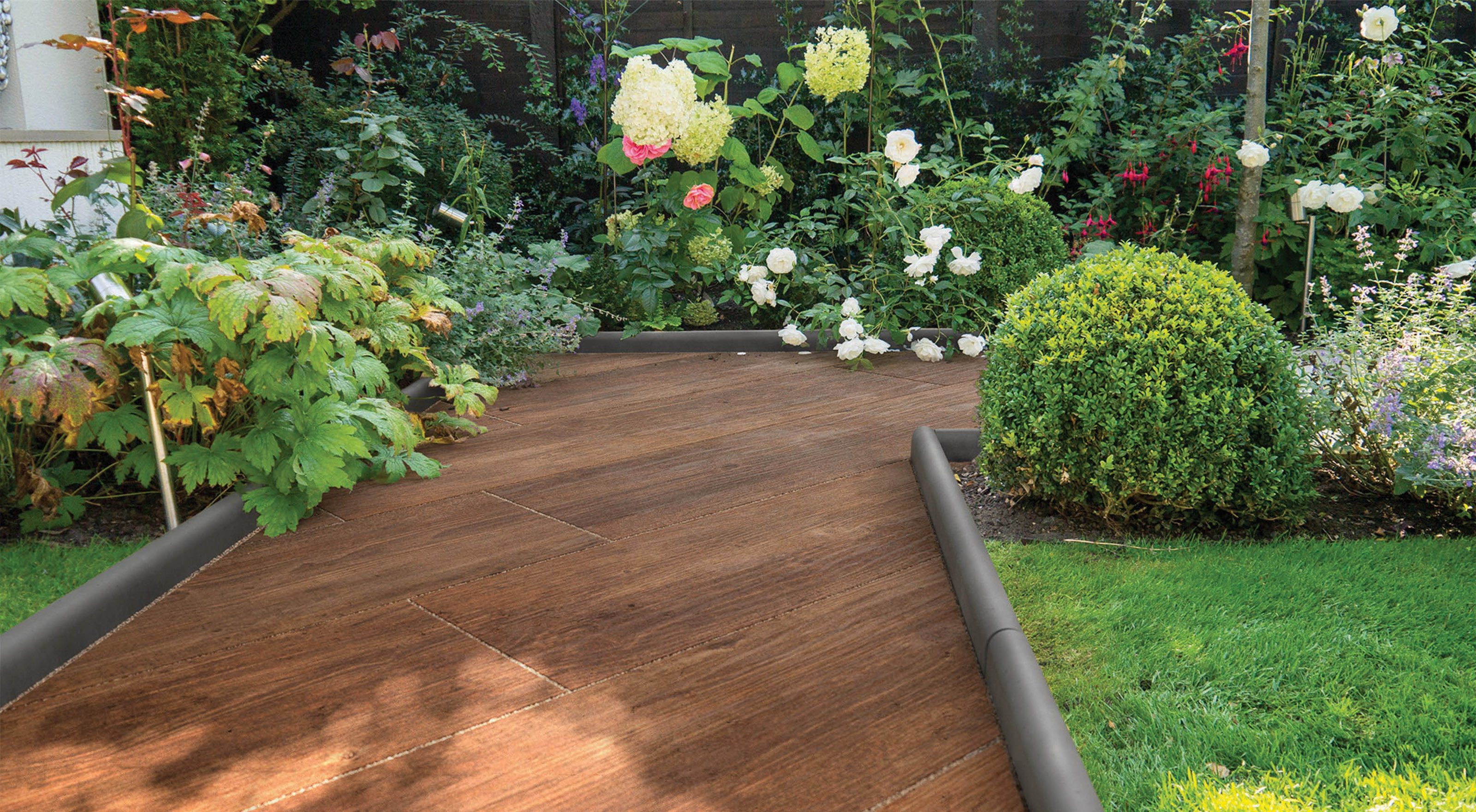
The ultimate aim of accessible garden design is to create a garden that can be used and enjoyed by everyone, no matter what their age or physical capabilities. Whether you're after a wheelchair friendly garden, want to make gardening easier as you grow older, or perhaps make a space safer for someone who is blind or partially sighted, there are plenty of brilliant ways to create a welcoming, easy-to-use space.
'The key to accessible garden design is to ensure that it doesn’t appear to have been designed for accessibility,' explains Ian Smith from garden design company Acres Wild. 'Good design eases movement, avoids awkward changes of direction and levels and incorporates features which delight the senses whether there is an issue of disability or not.'
Gardeners can make informed product choices too as garden designer and Gardeners' World presenter Mark Lane explains, 'Understanding your own body is key to making a garden work for you. For example, if you cannot twist your body and need, or would prefer, to sit down when gardening then a raised bed with flat sides isn’t advisable. Instead, go for a raised table so that you can get your knees underneath and work at a comfortable height.'
1. Plan seamless paths
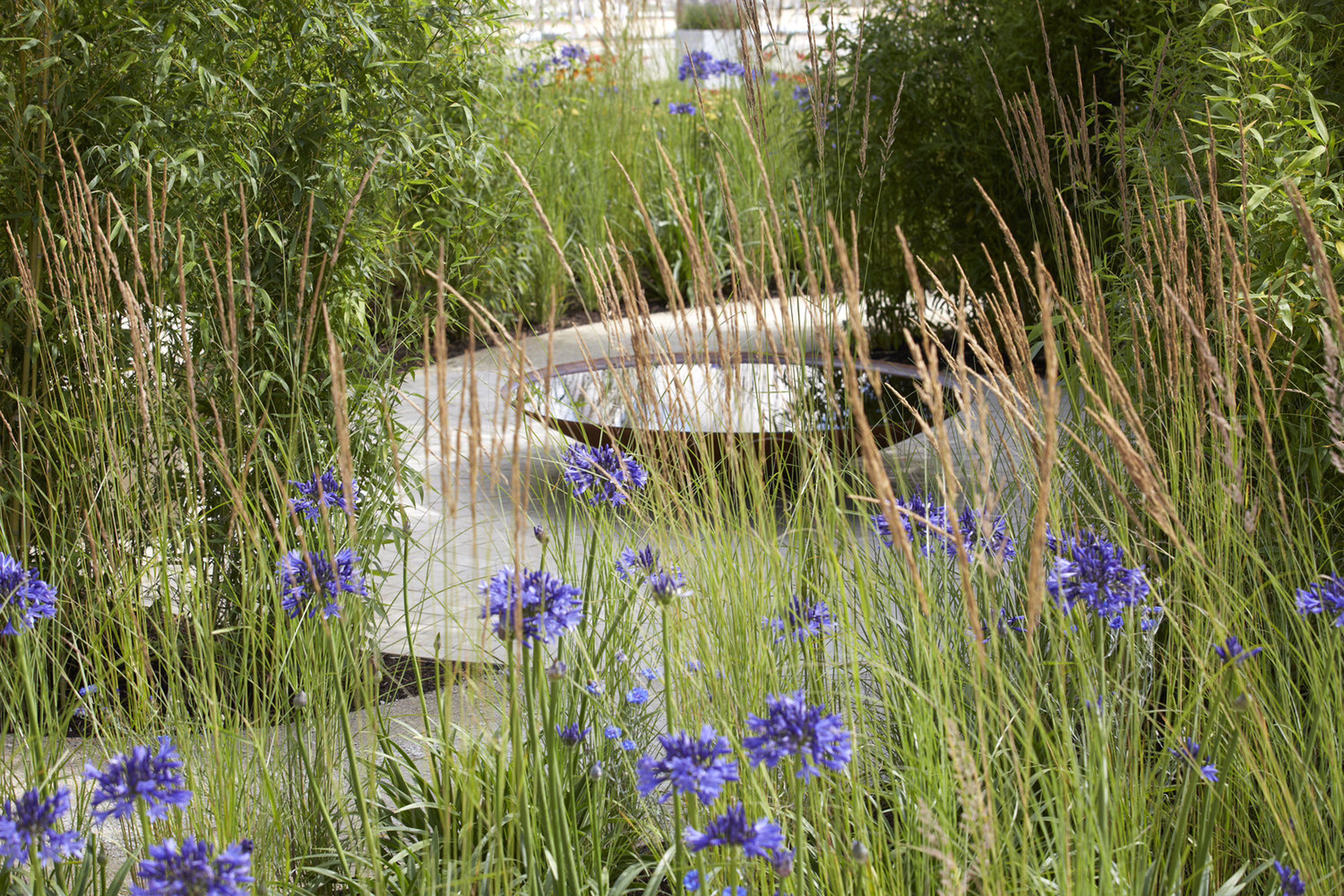
This spiral shape garden by designer Tom Massey features a path leading to a calm sanctuary at the centre with bespoke Yorkstone benches and a large reflective water bowl
For good accessible garden design, being able to move easily and safely around your outside space should be top priority, whether you use a wheelchair or walking frame, buggy or wheelbarrow, so take time to design any paths.
'The paving surface is really the key first consideration,' says designer Tom Massey, who featured on the BBC's Your Garden Made Perfect. 'It needs to be smooth and stable to allow comfort and ease of access. Resin bound gravel is a great material choice as it is very smooth, stable and fully permeable so doesn't hold water. It’s also low maintenance and easy to clean.'
Large format slabs and tiles are also a good option for a wheelchair friendly garden, providing they are well laid and meticulously level. 'Paving should be pointed with a minimum gap of 10mm,' designer Mark Lane. 'You want a firm, stable, non-slip surface. In some instances, anti-glare paving slabs are a good idea – especially for partially sighted or blind people.'
Gravel and chippings are best avoided if you rely on wheel power, as these can swerve and get caught on the small stones.
When it comes to planning your garden path ideas, consider where you need direct access to or whether you prefer a curving, more meandering route around your plot. Seats dotted at intervals will provide alternative garden viewpoints and features as well as handy rest stops. A width of around 1.5 metres is ideal for two people to walk side-by-side, in a wheelchair or using a frame or stick.
2. Rethink decking
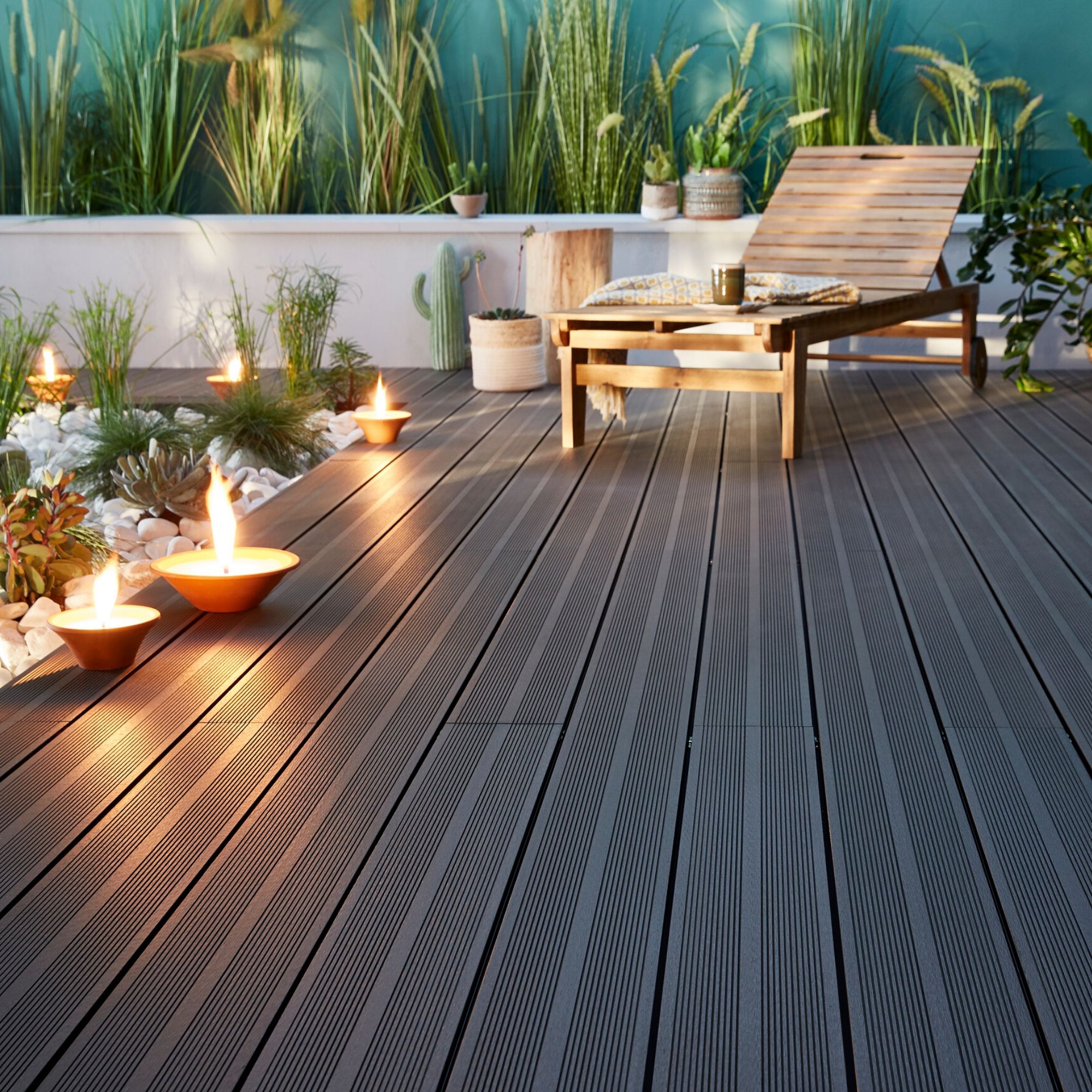
Decking ideas may seem a no-go if you're designing a limited mobility garden for someone who might be unsteady on their feet, particularly in wet and frosty conditions, but there are some standout products out there. Gripsure has a wide range of wooden decking boards and tiles with integrated non-slip resin strips. Graded to meet a British Standards PTV rating of 65+ (defined as having an ‘extremely low’ slip potential), the product is guaranteed for 10 years.
The best composite decking also scores highly in non-slip tests, so is a good choice for accessible garden design. Made from synthetic materials it inhibits algae and mould growth, a common problem with many timber deckboards. Look for high-quality products that are moulded with a prominent wood grain – not only do these look more attractive but they significantly increase friction underfoot.
3. Get the lowdown on ramps
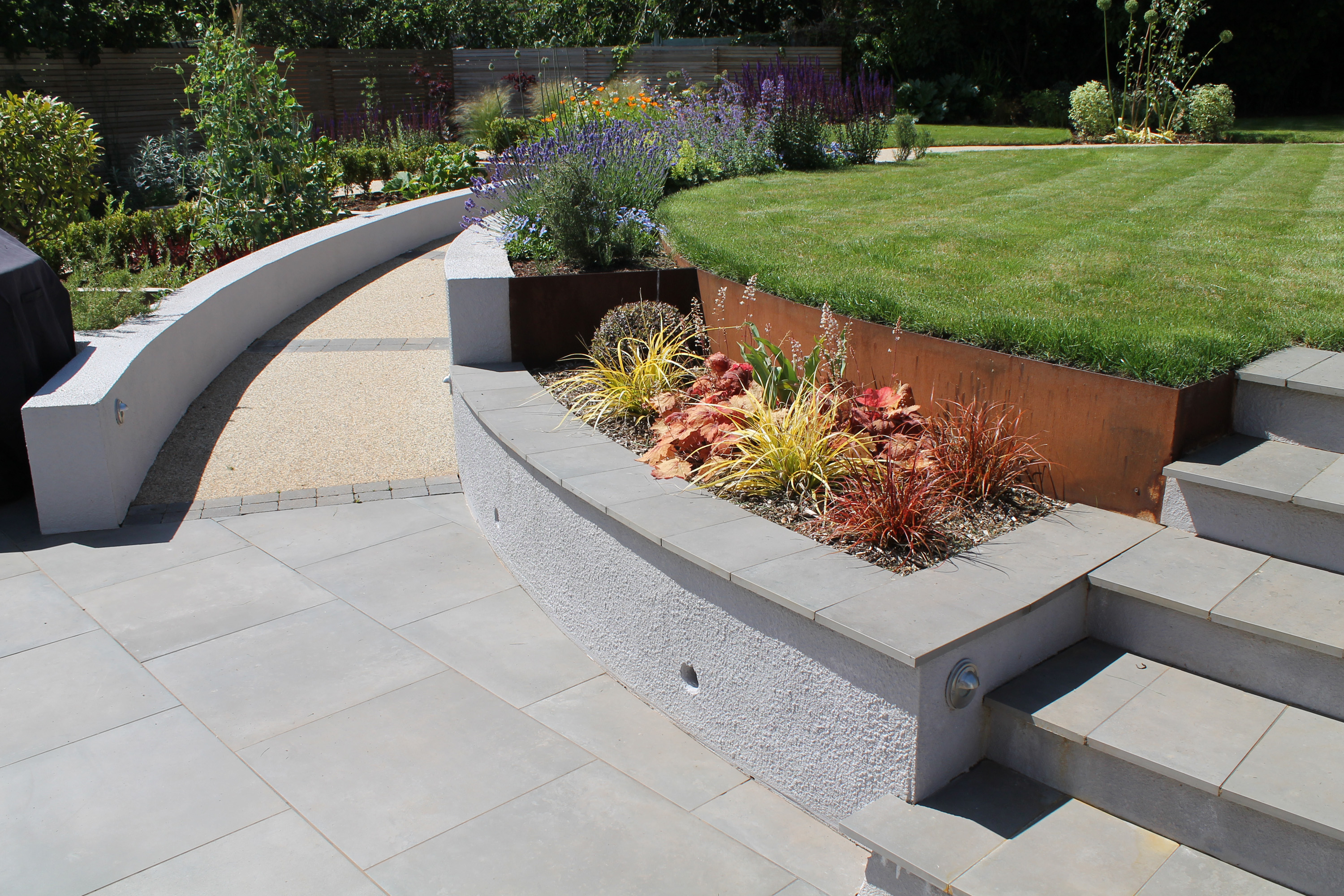
This wheelchair friendly garden by Outerspace Creative Landscaping uses gently sloping curved paths to connect different levels, while the paths are finished with resin bound gravel
Dealing with level changes in your accessible garden design can require some expert know-how. A flight of very shallow, deep steps, ramps or gradual slopes are all go-to solutions.
Planned well, each option can help to open-up the plot and create stunning features integral to the overall design, something the team at Outerspace Creative Landscaping know all about. 'The challenge in one family garden in Bristol was to use the additional requirement of wheelchair access to create a garden for the whole family to use and enjoy. Level changes were resolved across the whole garden using gently sloping curved paths wrapped around a raised circular lawn.'
A gradient no steeper than 1:12 is recommended and these should be fitted with handrails or be enclosed with walls – often doubling as raised beds – for safety.
Head over to our tiered garden ideas for more inspiration on designing a multi-level garden.
4. Make handrails a feature
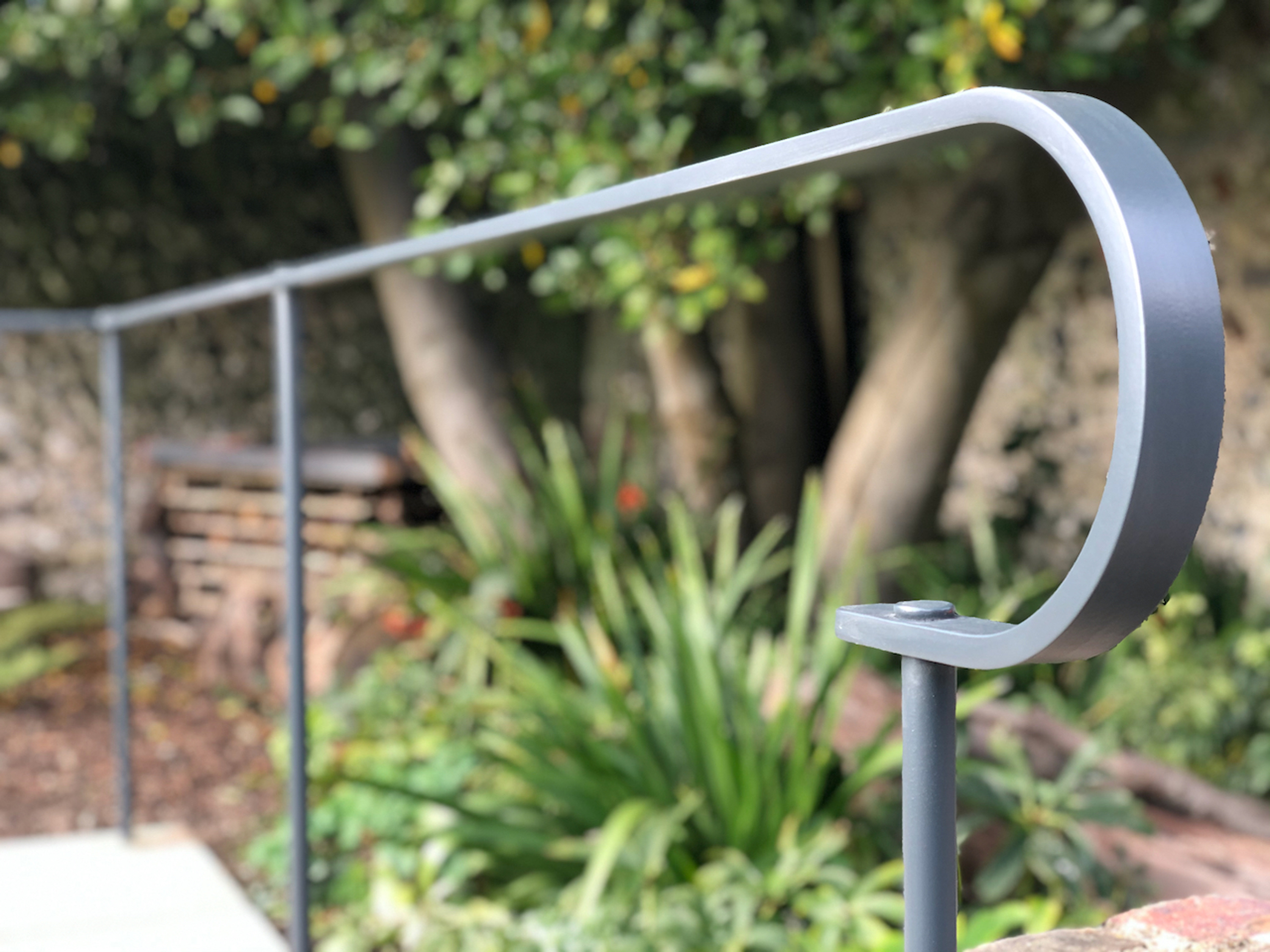
Bespoke handrails by James Price Blacksmith
Essential for guidance, support and reassurance, handrails are also an opportunity to add a decorative feature in your accessible garden design. There are plenty of different materials to use, and while there are some strict guidelines as to where and when they should be installed, they can also enhance the look and your experience of the garden.
'Think about the material you want to use,' says Mark Lane. 'Metal can be cold to the touch, especially in winter, whereas rope and wood feel warmer. Metal can be smoother, whereas wood and rope might need protecting and repairing.'
As a guide, the top edge of any handrail should be between 76cm and 94cm above the stair tread or slope. There are plenty of off-the-peg or custom-made rails on offer, varying in design and finish, and these can be floor or wall mounted.
Stainless-steel designs are often tubular and can have brushed, polished, powder or plastic-coated finishes in a range of colors, while traditional wrought iron can be decorative or industrial and robust. Commissioning a master craftsman can be an investment but also the chance to create an unique piece tailored to your needs and space.
Want advice on how to surround your deck to make it safer? Head over to our decking railing ideas.
5. Edge paths and borders
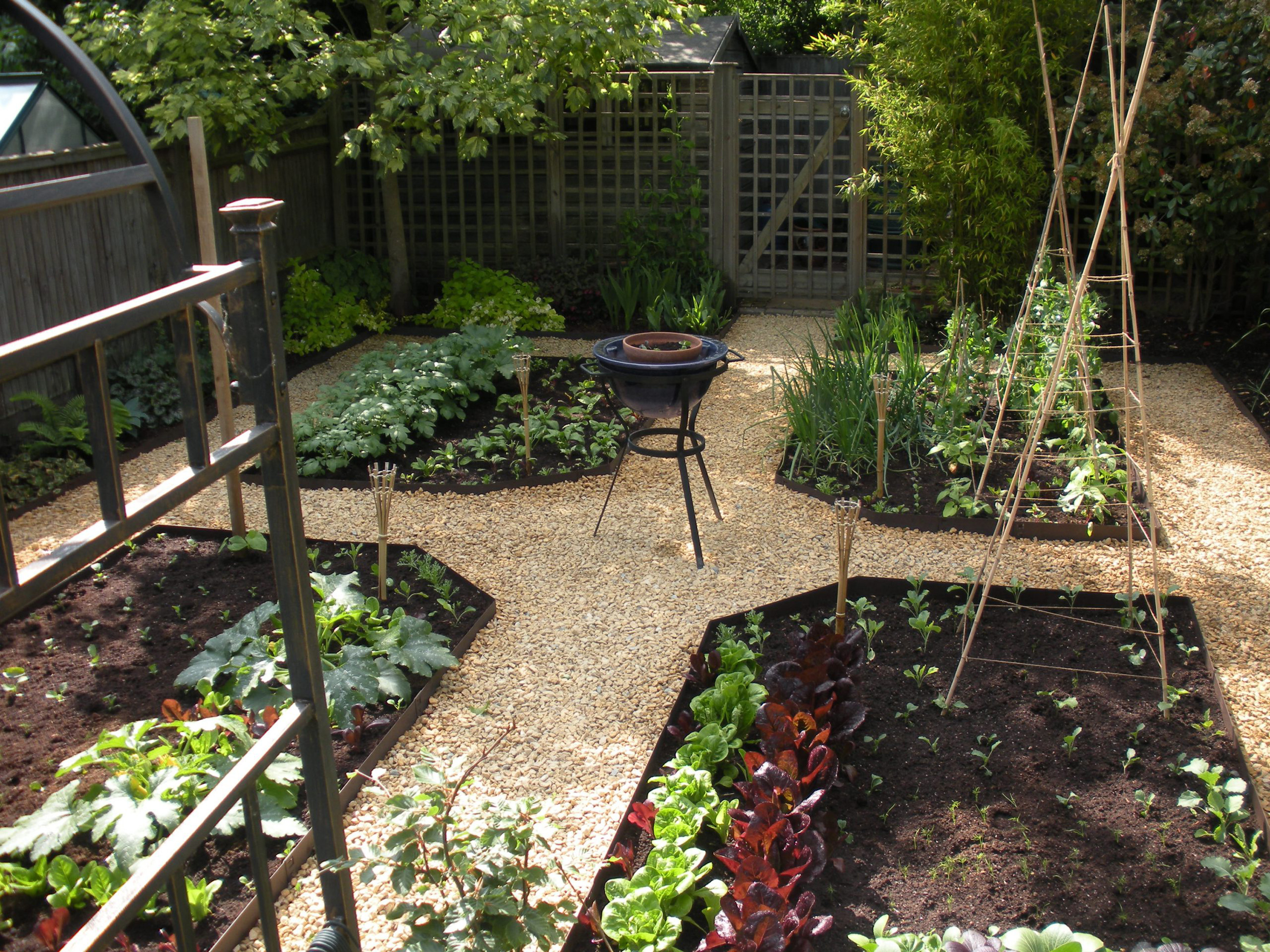
EverEdge Classic edging for lawns and flowerbeds
Neat garden edging ideas look undeniably smart and go hand-in-hand with contemporary designs, but they can also be a useful tool when it comes to accessible garden design. Not only do they create a barrier between different surfaces, preventing gravel and bark chippings from spilling onto a pathway, they can also form a handy raised outline.
This can provide guidance for those with sight issues, limited mobility and toddlers prone to trampling on borders. They can also help to keep wheelchair and wheeled frame users from going off the pathway, into soft ground. Options vary widely and can include flexible Corten and galvanised steel strips, raised bricks, shaped coping stones and traditional rope edging.
6. Grow hassle-free hanging baskets
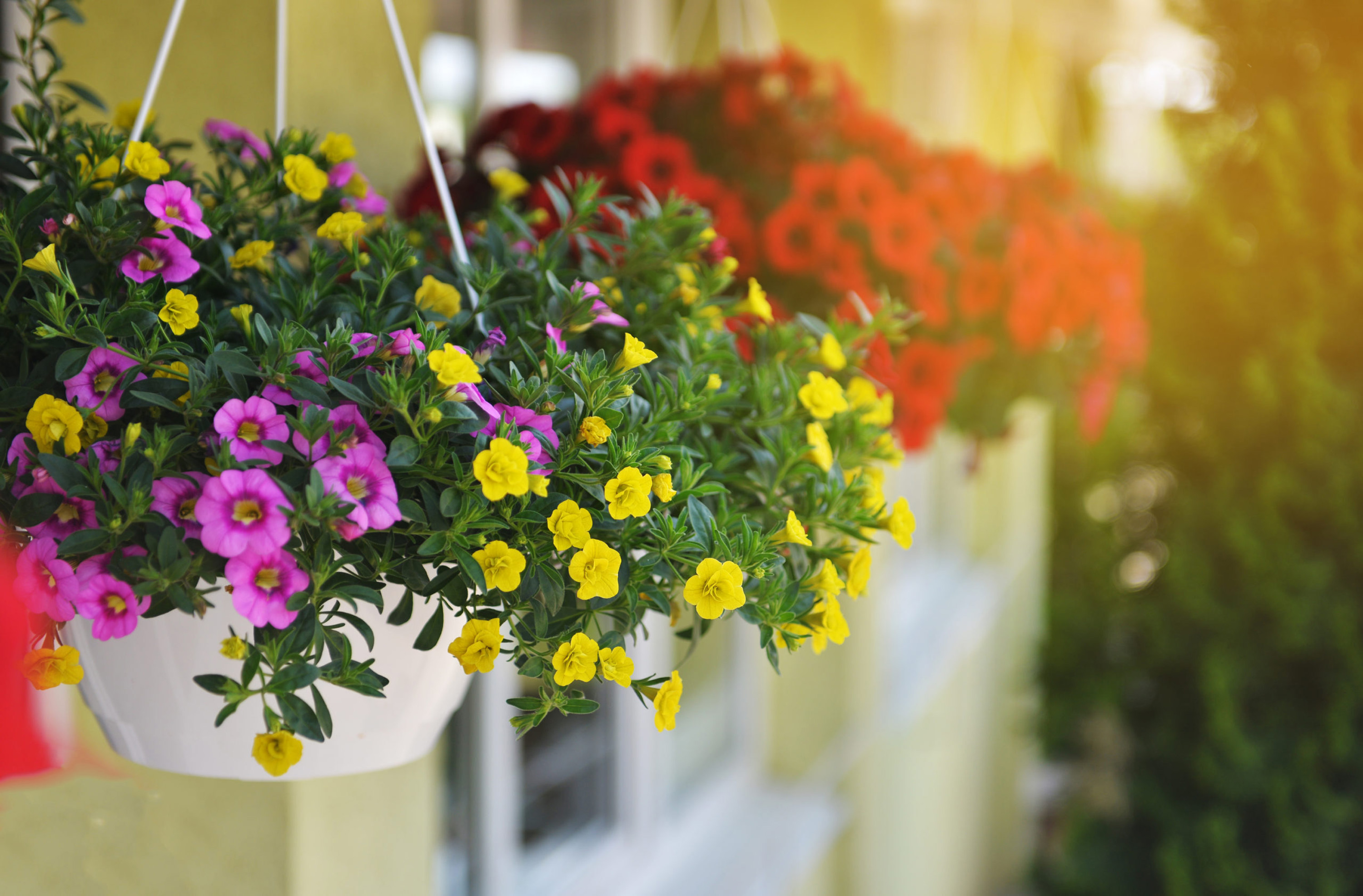
Use hanging baskets with pulleys for ease of use
Whether you’re a fan or not, hanging basket ideas can add valuable color and create another exciting growing opportunity. Hung to brighten walls, porches and pergolas, they provide endless chances to experiment with plant combinations and new trailing beauties.
What's more, just because you find reaching up high tricky, it doesn’t mean you have to miss out. Hi-lo systems, such as the one from Crocus are simple to operate. With swivel hooks that attach to the bracket and basket, the built-in pulley and ratchet smoothly lowers and raises the container as needed, making replanting, deadheading and watering easy.
Baskets with an internal reservoir will also help to reduce watering, as will using water retaining granules and moisture mats. Broken polystyrene pieces or leftover packing materials can also be used for lightweight drainage materials, lowering the effort required to lift the planted container.
There's advice on how to make a hanging basket in our guide.
7. Reduce weeding with a mulch
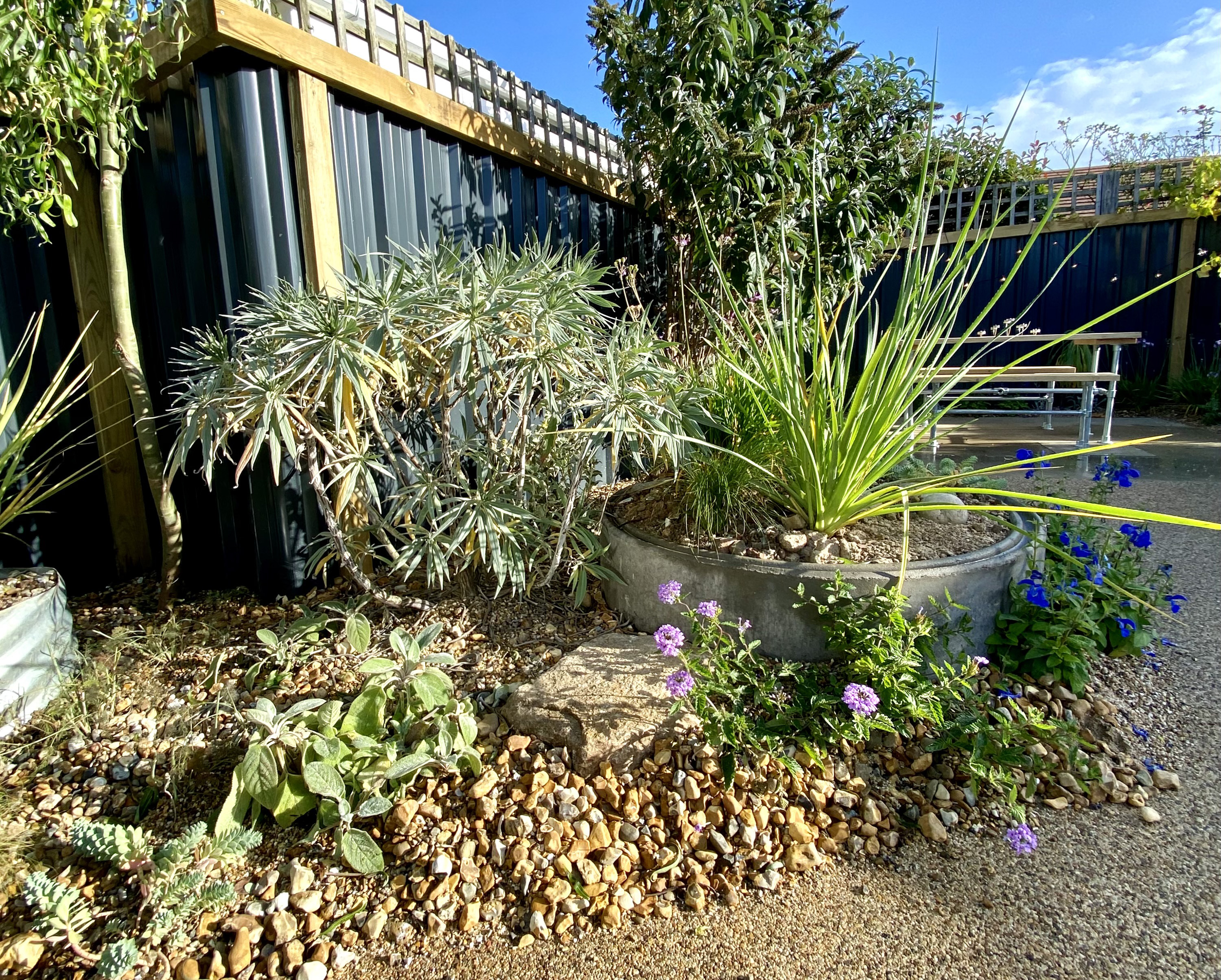
Adding mulch to your flowerbeds will cut down on weeding
Cut down on weeding and watering by dressing containers and borders with a layer of mulch. Aim for a depth of roughly 5cm and it will reduce the sunlight seeds need to germinate and slow down moisture evaporation too. Bark chips or nuggets, crushed shells and well-rotted compost will all do the job.
'Gravel is a good decorative choice,' says designer Tom Massey. 'Or you could get creative and experimental using crushed concrete, sand or shingle as a planting medium. It creates a very nutrient poor, harsh substrate. Certain plants like wildflowers, or Mediterranean plants will thrive in this type of environment, while most weeds will struggle to establish.'
Want to know more about using mulch and the benefits it can have for your accessible garden design? Our mulching guide has all the information you need.
8. Try vertical gardening
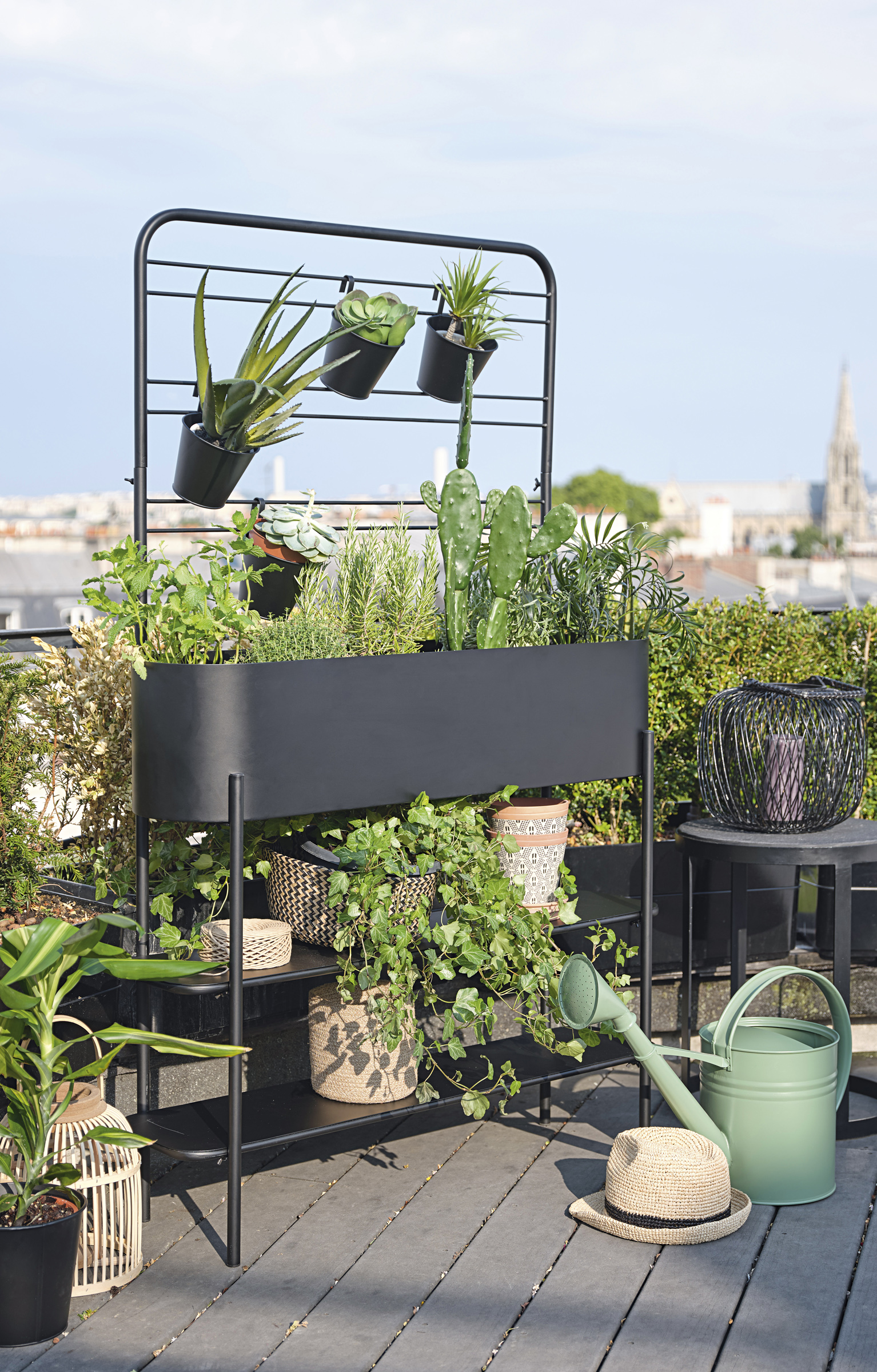
Growing plants up walls, fences, obelisks and trellis not only saves on awkward bending and the risk of toppling over, but it also helps to keep floorspace clutter-free too, particularly important in wheelchair-friendly gardens.
Creating an attractive leafy backdrop, it’s a great way to cultivate the best climbing plants such as clematis, sweet peas and roses, or a tasty range of beans, peas, cucumbers and thornless blackberries.
A narrow-raised bed around the edge of the plot is a great solution, just remember to top it up annually with well-rotted manure and compost to ensure a good crop. Alternatively invest in a raised planter with integral trellis.
A living wall is well worth considering in your accessible garden design too. Specialist pocket systems can be assembled to fit your space and many also have labour-saving irrigation systems built-in. Designed to create a seamless display of plants they certainly look impressive, but you can create a similar effect with rows of wall-mounted window boxes.
9. Choose easy-reach water features
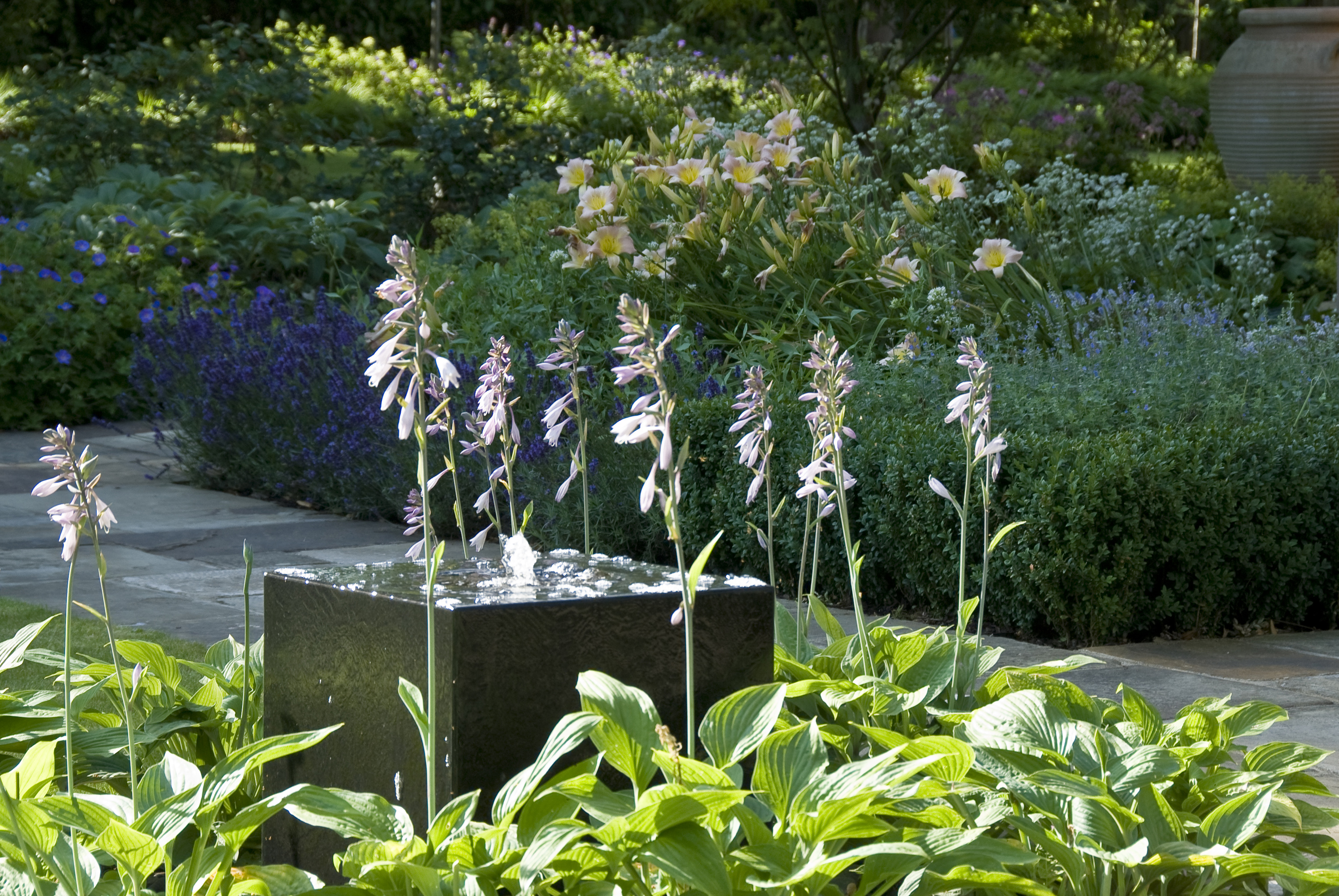
This garden project by Acres Wild is a fully accessible family garden, designed to enhance the life of its wheelchair user owner
'Locating features that draw you on to explore around the next corner are great ways to encourage movement around the space,' explains Ian Smith, designer at Acres Wild. 'Water is one of the best elements to include for this and being able to experience it at close quarters – perhaps trailing a hand in still or moving water – is made possible by raising it up to a convenient level, providing interest and entertainment for hours.'
Suitable water feature ideas that would work beautifully for accessible garden design and allow plenty of movement on all sides could include placing a reflective water bowl on a simple plinth, opting for a water table or a freestanding cascade. Where space is more limited, go for a decorative water wall or projecting water chute falling into a raised pool.
10. Tailor your work area
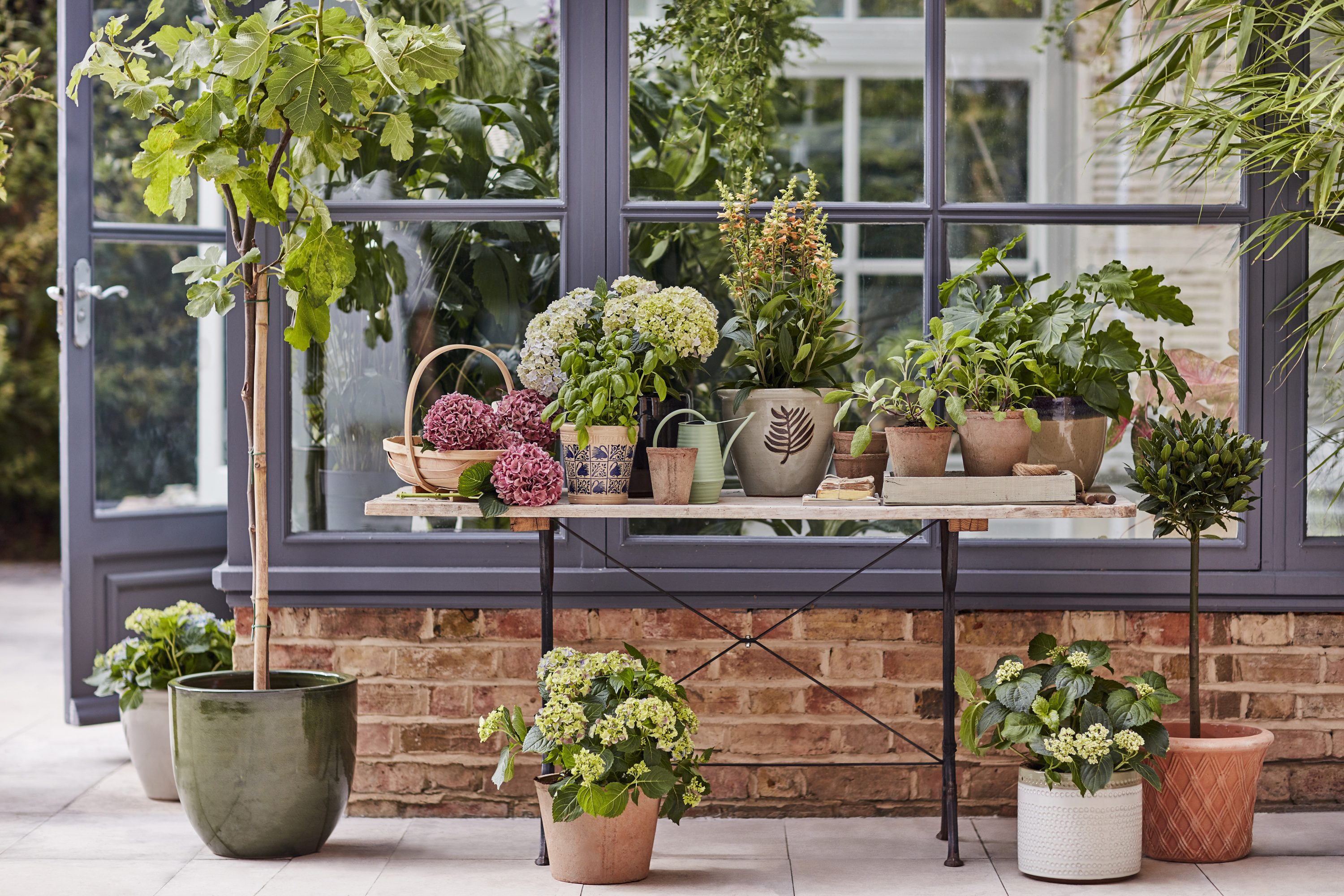
Set-up from Dobbies
Whether you are most comfortable sitting or standing, having your work table at a convenient height is essential to avoid back and neck strain. Most potting tables are designed to be stood at, but there are wooden designs specifically made to be used from a wheelchair. The ‘U’ shaped surface allows the gardener to position themselves centrally and easily twist or turn their chair to work on three sides.
Manger-style tables are another great option for accessible garden design as their crossed legs create space for a wheelchair or wheeled frame to slide easily underneath. Plant them up or place a board across the top for sowing seeds, potting on etc.
Keep essentials close to your working area to limit save on time and effort. The Applaro range from Ikea features a handy fold down table and slatted rear wall panel that can be fitted with movable hooks, containers and shelving so you can organise your space. Crocus also has a handy tiered plant caddy that’s perfect for carrying a number of pots and seedlings safely in one go.
11. Cut down on lawn care
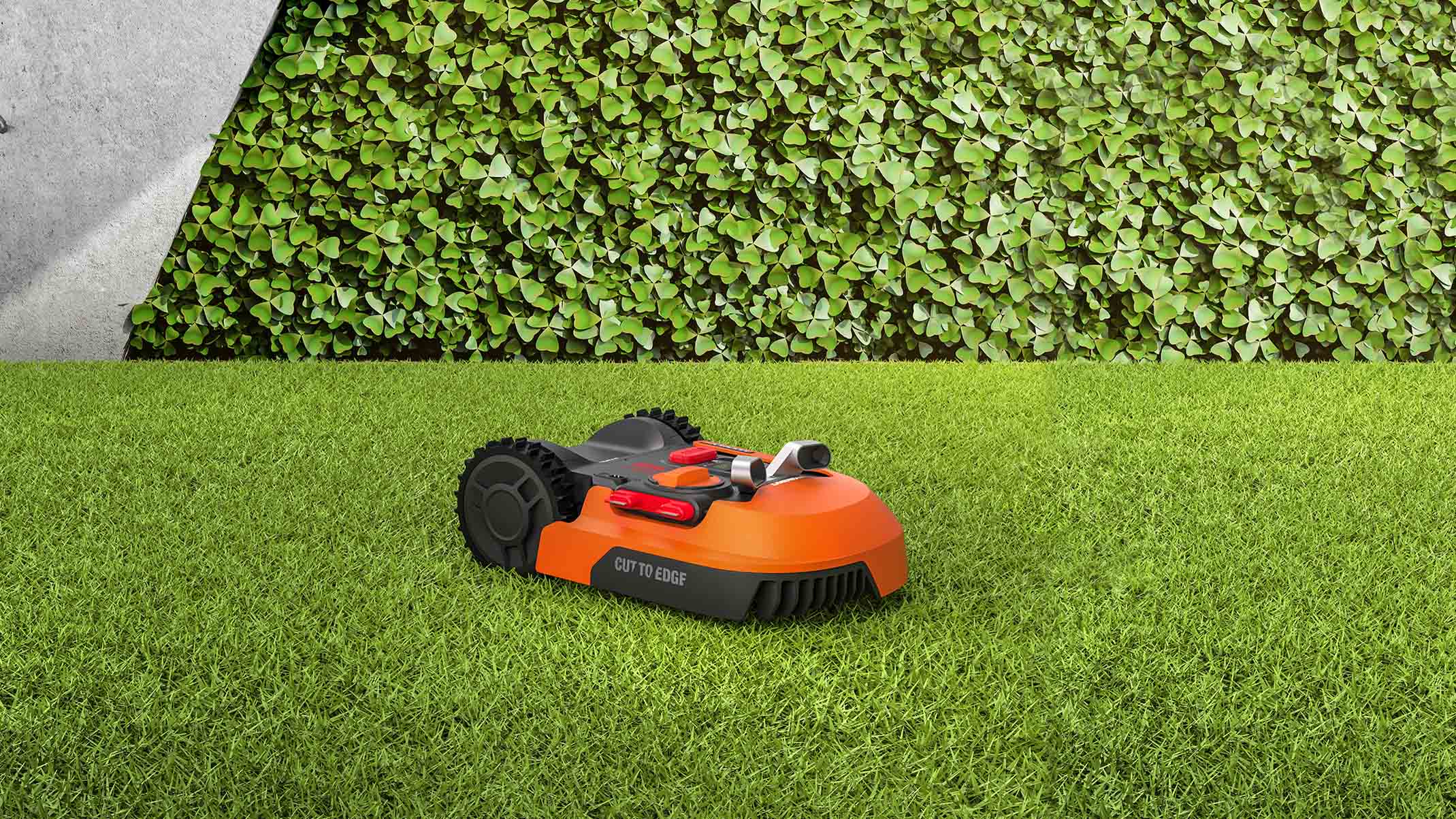
It’s often thought that lawns can take a fair degree of work to keep them in top condition, but there are some short cuts you can take to aid your accessible garden design.
While a ride-on mower is the stuff of dreams and will help minimise effort, they are prohibitively expensive, so instead, why not opt for one of the best robot lawn mowers. Designed to sit in a charging port and trundle around the garden cutting the grass, following a preset route, they take up little room and are ideal for small or medium sized lawns.
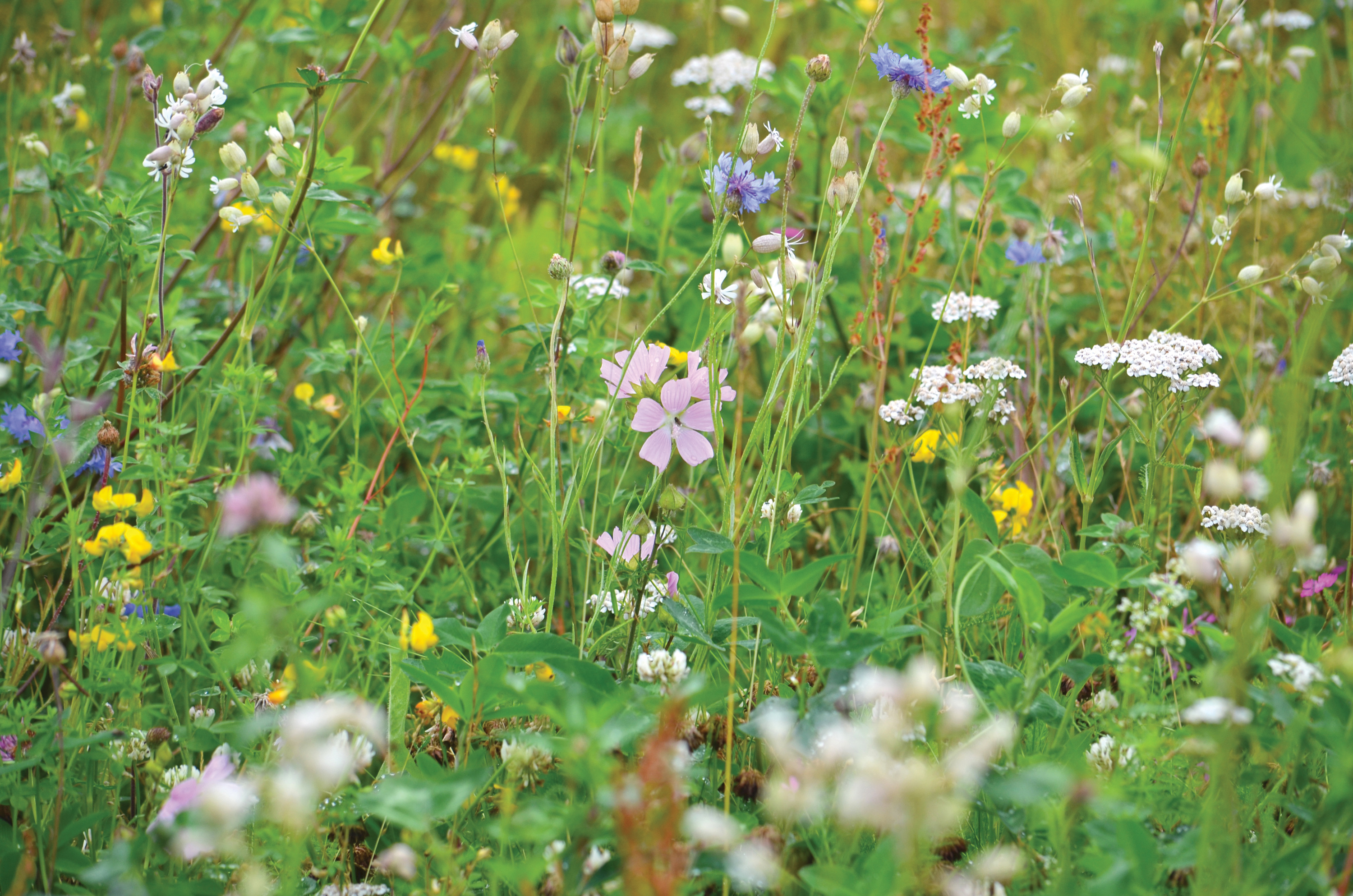
Swapping regular grass for a less demanding surface is another option. Clover needs little upkeep and creates a durable and relatively hardwearing covering that is loved by pollinators, while laying a wildflower turf will fill the garden with colour and interest throughout the summer.
For an alternative living carpet try sedum ground matting. 'These plants are far more drought tolerant than lawn grasses and they’ll delight you all year round,' says Lee Andrew, Group Operations Manager at Harrowden Turf. 'While sedum plants won’t tolerate frequent foot traffic, these low-growing plants have a fascinating texture, are very kind to the environment and are a magnet for pollinating insects.'
Need more alternative lawn inspiration? Take a look at our alternatives to grass feature.
12. Design raised beds with seating
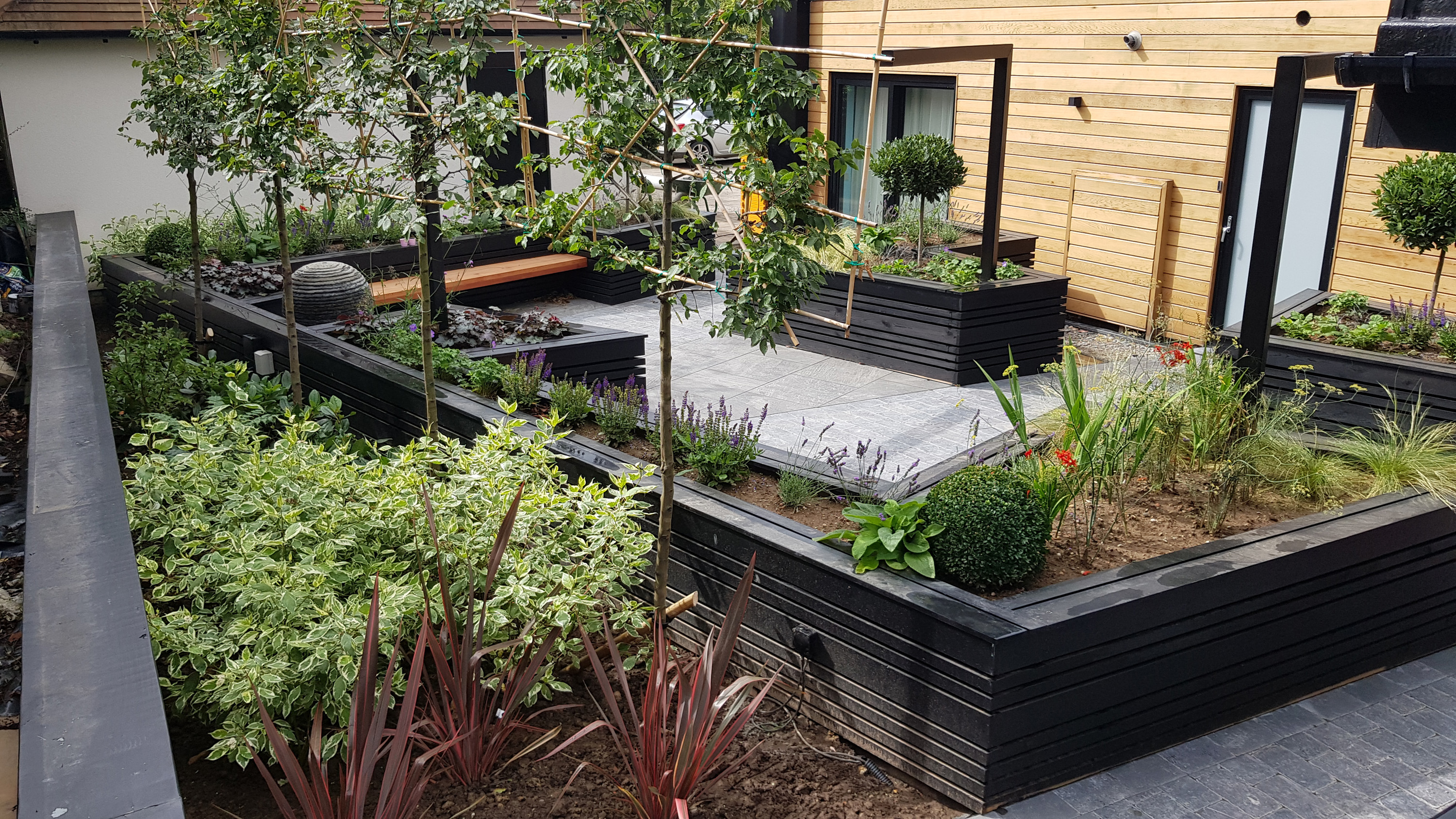
This contemporary sensory garden with full wheelchair accessibility by Tythorne Garden Design features a collection of angular raised planting beds and built-in seating
'Carefully considered integrated seating can make such a difference to a garden with raised beds,' says designer Ian McBain, from Tythorne Garden Design. 'It helps us to enjoy all of the wonderful sights, smells and sounds that are so enhanced when we are really in amongst the planting. A good height for garden seating is 45-50cm, but it is always good to check the specific individual requirements of the people who are likely to be using the garden.'
In the wheelchair-friendly garden pictured above, Ian contrasted bench-style seating in oiled cedar with beds made from black stained softwood sleepers, to create a bold and contemporary look.
Try including the best ground cover plants for a more tactile feel in your accessible garden design. Heuchera, feather grasses and aromatic stars such as fennel, lavender and thyme all work beautifully in raised garden beds and need little upkeep too. Spreading gradually, they will eventually create a mass of color and scent that will provide year-round interest.
Positioning a raised water feature alongside built-in seating is a great idea too. Introducing movement, sound and an everchanging surface to run fingers over, it is hugely soothing and great for reducing stress levels.
13. Go for easy watering
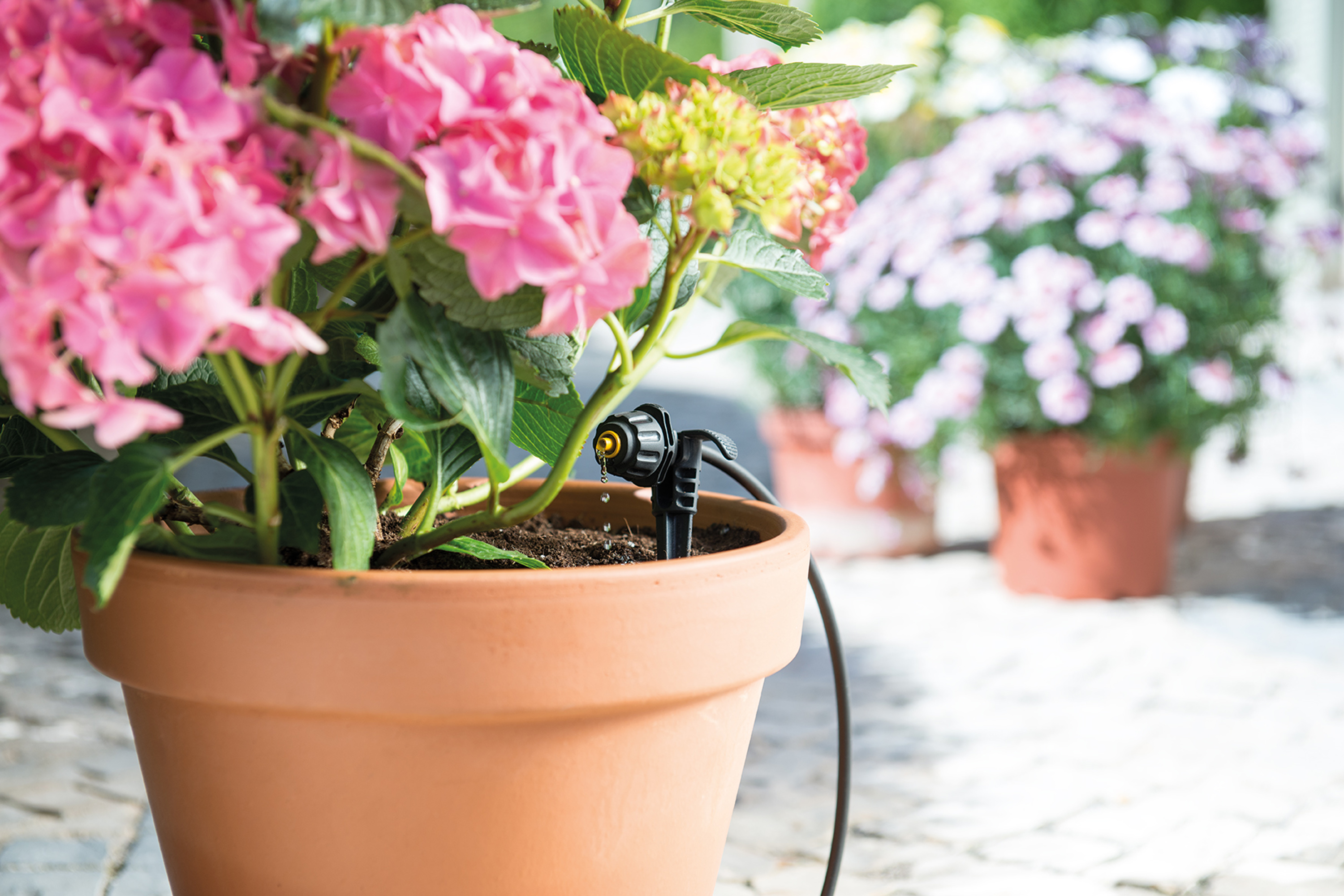
Automatic watering systems, such as the Easy Drip from Hozelock, will make it easier to keep on top of watering your garden
Take the hassle out of watering with just a few simple changes to your accessible garden design. Swapping a hose spray gun for a lance means you can reach pots and hanging baskets with minimal effort and movement.
Another option is to opt for a watering can with a control valve (such as a NuCan). With an ample 7 litre capacity – although half full may be heavy enough – you can manage the water flow by pressing the button located at the top of the handle. You don’t even have to tilt the can as the water drains.
If you're looking to invest in the best garden hose, curly and expandable hoses tend to be lighter to handle than traditional straight designs and also take up less space when not in use.
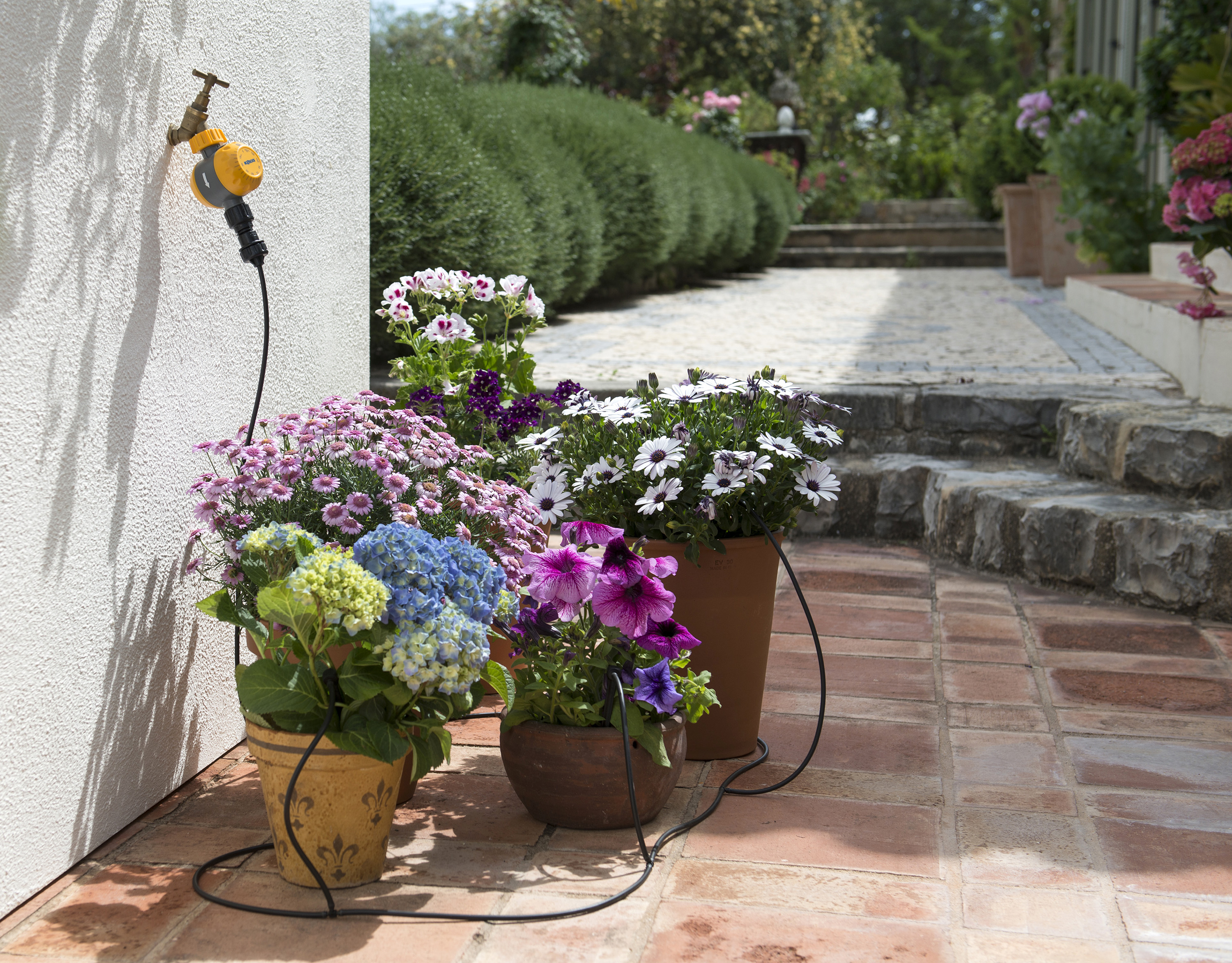
The Pot Watering kit from Hozelock will save you time and help to reduce your water consumption
Reducing the need for watering is a wise step for any limited mobility garden. Standing pots and seed trays on capillary matting will allow moisture to be absorbed as and when needed. Seep hoses laid on or under the soil will help keep flower and veg beds in tip top condition, while simply grouping pots together can save on time and effort.
Self-watering systems are another great option for a wheelchair friendly garden and although initially costly and time consuming to set up they are well worth the effort. Sarah Dixon UK and International Marketing Manager at Hozelock explains, 'Watering borders, hedges and vegetables can be made effortless with an irrigation system, such as our Easy Drip system, which delivers a simple solution to control, distribute and deliver water in the garden. The clever drippers and components make installation and adjustments simple and means watering the garden becomes an automated task all-year-round.'
Choose how sophisticated you want your system to be. Controllers vary from simple removable and programmable battery powered units to hub linked apps managed remotely from your smartphone or hand-held device.
There's more garden water saving tips in our special feature.
14. Balance mood and practical lighting
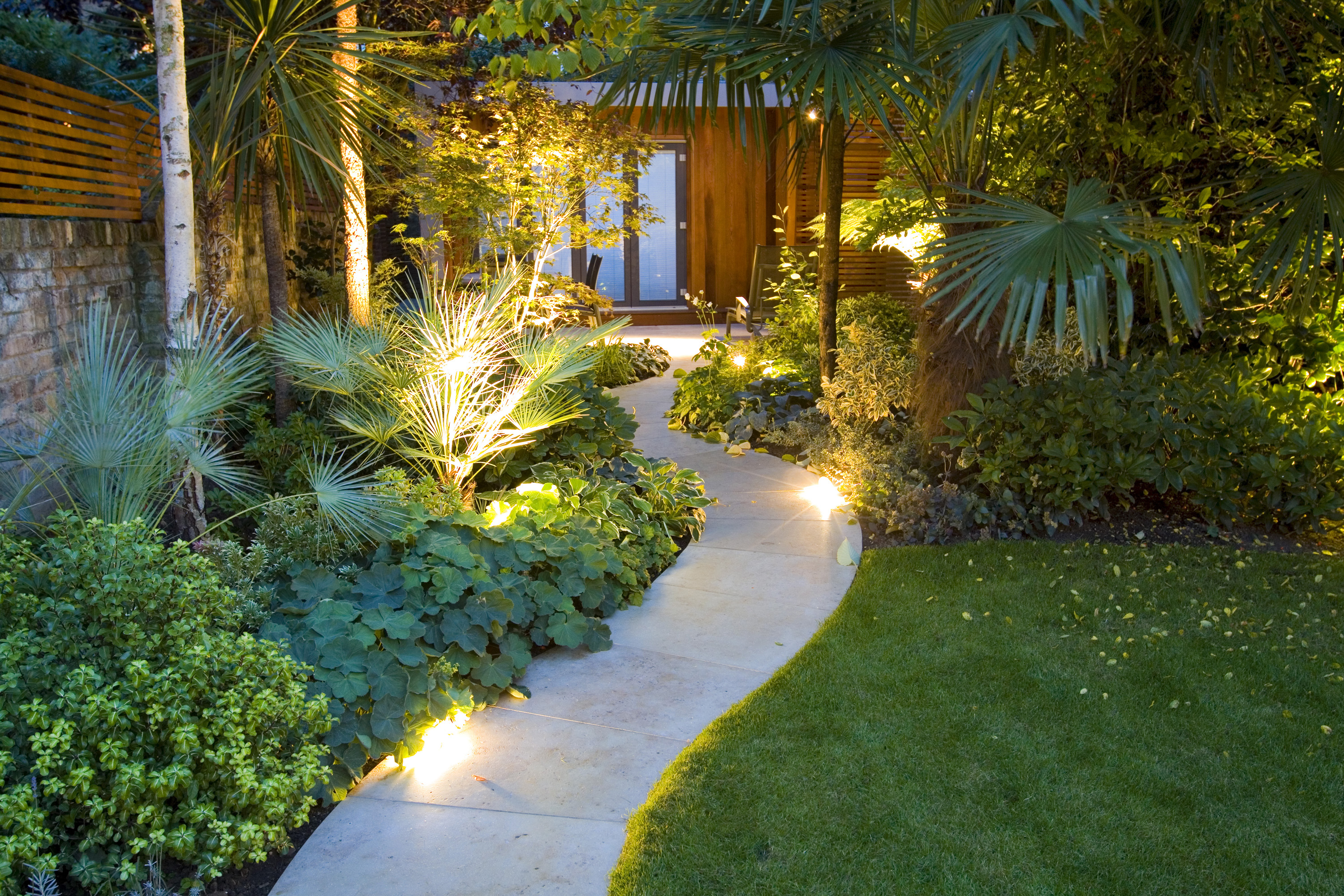
The project by The Garden Builders uses hidden lighting along the edge of the path to safely guide the way to the far end of the space
Getting your garden lighting ideas right can transform how you use and enjoy your garden. 'By combining a mixture of ambient, task and accent lighting we create general glow, highlight key garden features such as trees or sculptures, and provide essential brightness for paths and steps creating a wonderful mood for night time enjoyment,' says as Sally Storey, Creative Director of John Cullen Lighting.
Post or mast lights dotted along a path or driveway’s edge will cast a gentle downward glow, enough to safely guide the way, whilst neat wall lights help pick out retaining beds, gates and entranceways. Many contemporary light fittings are low voltage and easy to retro fit. Some can also be controlled remotely via a handset or app to make life even easier.
Check out our outdoor lighting design feature for more in depth info.
15. Invest in ergonomic tools
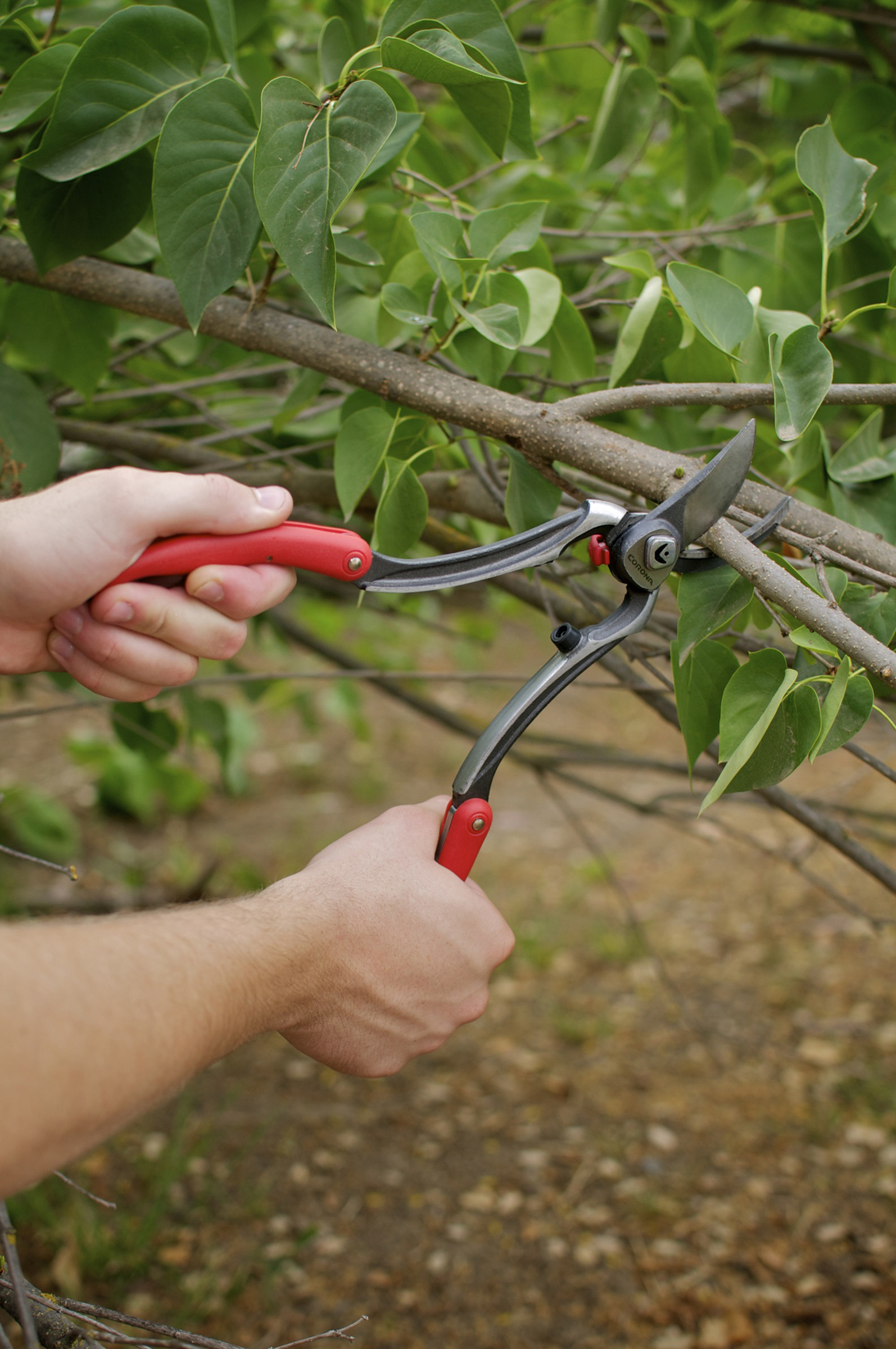
Having the right garden tool for the job is important for any gardening task, especially if weight and grip are a problem. Thankfully, leading tool manufacturers are keen to help and are constantly improving the ergonomics of many of their products.
'If you’re gardening in a seated position and are likely to be using the tools at arm’s length, weight is a key consideration when selecting tools - the lighter the better,' says Rainer Schubert, managing director of Burgon & Ball. 'Also, look for tools which have a comfortable grip, which will aid precision in use.'
Gardeners' World presenter Mark Lane is a fan of Burgon & Ball’s RHS Endorsed Precision Shear while the Ergo Deadheader has a secure finger loop ideal for those with reduced wrist and hand strength.
Most hand tools are designed to be gripped and used in a straight, jab-twist motion and this can prove tricky for anyone struggling with reduced motor control or arthritis. Opting for tools with handles set at a right angle can ease wrist pressure and aid control.
Peta offer a great range including a trowel, fork and weeder that can be used with an additional arm support cuff. They also have a long reach range perfect for seated gardening. After the best secateurs with an easy grip? Then try Felco’s No.7 model, designed for professional use they have a secure grip, bypass action and special rotating handle designed to lessen wrist strain.
Tools with telescopic handles can be useful, particularly when pruning shrubs or roses. Double compound loppers or pruners reduce effort thanks to their assisted cutting action and combined with handles that are adjustable in length they can tackle most tasks. Look for a lightweight aluminium design with safety locking mechanism – our guide on the best loppers has some top choices.

Jill puts her love of plants and all things garden related down to the hours spent pottering around with her Nan and Grandad when she was little. Today she is lucky enough to have a garden of her own in Surrey, England, and spends much of her time writing about them too.
